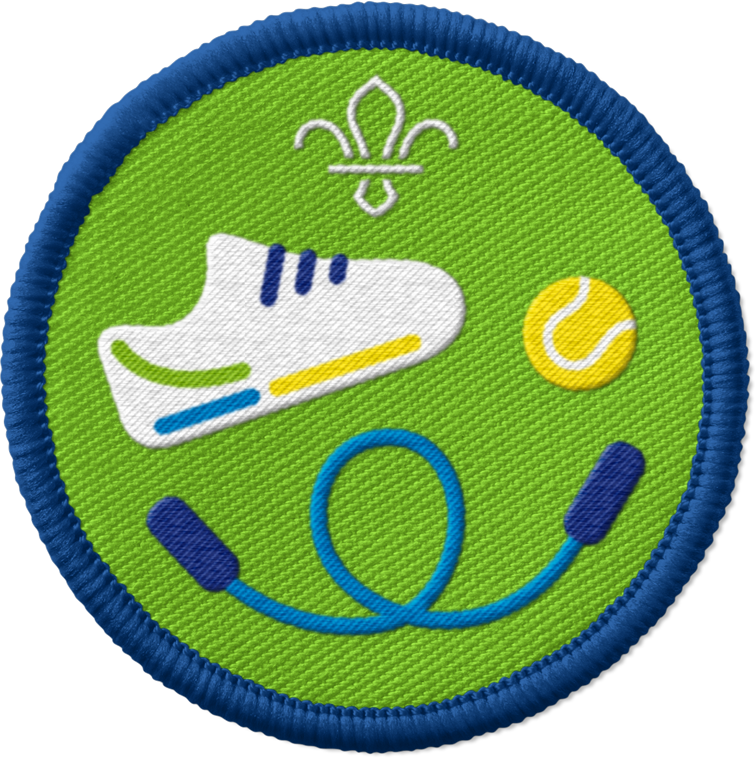
What is the time Zazu?
You’ll need
- Cones
Before you begin
- Use the safety checklist to help you plan and risk assess your activity. Additional help to carry out your risk assessment, including examples. Don’t forget to make sure all young people and adults involved in the activity know how to take part safely.
- Make sure you’ll have enough adult helpers. You may need some parents and carers to help if you’re short on helpers.
Planning and setting up this activity
- Make sure you have a large, open space to play. If you are doing this outside, you may want to consider marking out the boundaries.
- Remember to check the terrain and make sure the game area is free of hazards. For example, hazards could be dips in the grass, steps, rocks or rivers if you’re playing outside, or wet floors if you’re playing inside.
Introducing The Lion King (1994)
- Gather everyone together and ask if anyone has seen The Lion King. What do they remember about what happens? Can they remember the animals in it? And does anyone know where it was set?
- Tell everyone that The Lion King takes place on the African Savannah, which have warm, wide open spaces covered with several different types of grasses.
- Ask if anyone knows the animals you might expect to see in the Savanna. In the African Savanna, you might find giraffes, zebras, elephants, lions, hyenas and leopards. You may want to show the music video or show pictures of the song ‘I Just Can’t Wait to be King’ and discuss all the different animals you see throughout the video.
- Explain how you are going to see if we can behave like animals you find on the savanna as you play a version of ‘What Time is it, Mr. Wolf?’, but instead of a wolf, it'll be ’What's the time, Zazu?'. In this version too, everyone will be moving just like different animals in the African Savannah.
- Ask if anyone knows who Zazu is.
- Zazu is a hornbill bird, and Mufasa’s most trusted advisor. He is extremely loyal to the king and takes his duties seriously. Zazu likes to stick to the rules and keep things orderly, so will want to catch animals out if they move when he turns around.

Running this activity
- Choose someone to be Zazu.
- Zazu should stand against one side of the space. They could also stand at a marker, such as a cone.
- Everyone else should line up and wait at the opposite end of the space to Zazu.
- Zazu should turn around, so they have their back to the other players and can’t see them.
- The aim of the game is to avoid being caught by Zazu. Zazu will call out a number and players need to step forward that many spaces. When Zazu eventually says ‘It’s migration time!’, everyone needs to quickly get back to the start before Zazu can catch them.
- Together, when everyone is ready, the players should call out ‘What time is it Zazu?’
- Zazu then says a time and an animal, such as ‘It’s 3 o’clock, flamingos’.
- The players would then take that number of steps towards Zazu, moving the way a flamingo would. (We’ve included suggestions for animals and their movements on this page). For example, for ‘3 o’clock flamingos’, you would take 3 steps/hops forward on one leg, just like a flamingo.
- Everyone should keep repeating the question again, saying ‘What time is it, Zazu?’ and moving forward the number and style shouted each time.
- Eventually, in response to the question, Zazu should say, ‘It’s migration time!’
- When Zazu says this, Zazu will start to chase everyone.
- Everyone needs to get quickly back to the start before Zazu can catch one of the players.
- If Zazu catches one of the players, then that player becomes Zazu. The game starts again.
- Flamingo – balance and hop forward on one leg
- Elephant - stomp as you move forward
- Zebra - tiptoe as you move forward
- Lion – make a pouncing motion as you move forward
- Ostrich - flap your arms as you move forward
- Giraffe - hold your arms in the air as you move forward
- Wildebeest – lunge as you move forward
- Cheetah - move forward as quickly as you can
- Antelope – skip forward
Rafiki’s Reflection
In this game we spent time thinking about all of the different animals you might find in the African Savannah. You can even see some of them in The Lion King (1994). In order to be successful in this game, you likely had to do some strategising and problem-solving. What was the trickiest part of the game? Did any of the big numbers take people by surprise? People might have had to think about the size of steps they took.
You had to move like animals. Which animal movement was your favourite? Did this make the game harder? Were any animals easier to imitate than others?
If people were playing Zazu, they might have had to think about what numbers to choose. They may have wanted people to come closer, as this makes it easier to catch and tag them. Did anyone think of any strategies or ways to play the game?
If you watched the music video of ‘I Just Can’t Wait to be King’ or discussed the different animals that can be seen in The Lion King, think about if the animals worked together. Animals often work as a team, such as a pride of lions, or a herd of antelopes. How did the animals work together? Did you work together or communicate with someone in the game? If you played the game again, how could you work with someone to make the game easier?
Safety
All activities must be safely managed. You must complete a thorough risk assessment and take appropriate steps to reduce risk. Use the safety checklist to help you plan and risk assess your activity. Always get approval for the activity, and have suitable supervision and an InTouch process.
- Active games
The game area should be free of hazards. Explain the rules of the game clearly and have a clear way to communicate that the game must stop when needed. Take a look at our guidance on running active games safely.
- Contact games and activities
Make sure everyone understands what contact is acceptable, and monitor contact throughout the activity.
- To make this game easier, you could have more than one Zazu or play in a smaller area.
- To make this game harder, you could have a wider area or distance to play over.
Make sure everyone can move around the space and do not hesitate to make adaptations to the suggested movement to fit the needs of the group.
All Scout activities should be inclusive and accessible.
You could play the game again, but this time, divide the young people into small teams. Each team should then be given a different animal to move like. Now, see if they can work together to use the same movement, and move at the same speed. Can they run away together in time before Zazu catches them? Or can they help each other get out the way?
Young people could come up with their own animals and actions for Zazu to call out.

